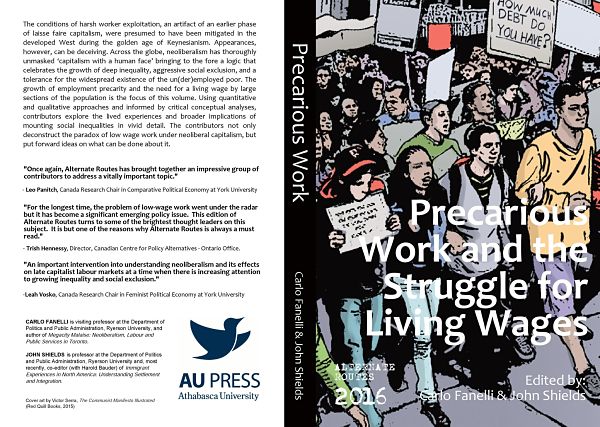Finally the Right to Strike: But What About Organizing?
Abstract
The Saskatchewan Federation of Labour decision from
the Supreme Court of Canada (January, 2015) is a landmark case in that,
after a twenty-eight year judicial lead-up, it finally confirms the right to
strike as guaranteed by the Charter’s Section 2(d) freedom of
association. The decision found the provincial government’s unilateral
authority over designating essential services during a work stoppage to be
unconstitutional. The decision is indeed a victory for unions that goes far
beyond the particular issues in the case and will have ramifications for
years to come. This paper presents a preliminary look at the decision and
discusses four interrelated areas of labour law that will be affected. The
downside of this decision, however, is the finding that amendments to
Saskatchewan’s Labour Relations Act that are designed to make organizing
more difficult, are constitutional. This decision continues a trend in labour
legislation that will undoubtedly help undermine the much needed
organizing in Saskatchewan in the face of declining union density,
particularly for the fast growing cadres of precarious workers who need
unions. This aspect of the decision, which represents the loss of a rare
opportunity for the Court to support organizing, will also be discussed
briefly.
Downloads
How to Cite
Issue
Section
License
Articles are published in Alternate Routes: A Journal of Critical Social Research under the Creative Commons "Attribution/Non-Commercial/No Derivative Works" Canada licence.
The copyright for the articles published in this journal is retained by the authors, with first publication rights granted to the journal. By virtue of their appearance in this open access journal, articles may be used, with proper attribution, in educational and other non-commercial, not-for-profit settings. The submission of a manuscript to Alternate Routes will be taken to mean that the author understands and agrees to the following:
- the manuscript represents original work not previously published;
- the manuscript is not being considered elsewhere for publication in the same language (publication elsewhere in an alternate language does not preclude acceptance of submission to Alternate Routes);
- appropriate written copyright permissions have been secured for republication of any copyrighted material contained in the manuscript;
- copyright for this article is retained by the author, with first publication rights granted to Alternate Routes;
- by virtue of its appearance in this open access journal, it is understood that the article is freely available for use, with proper attribution, for educational and other non-commercial purposes;
- reuse of the article for commercial purposes by anyone other than the author requires permission of the author;
- the author agrees to cite Alternate Routes as a source whenever h/she later republishes or reuses the article in other platforms.


